
NBA Jam is a basketball video game developed and published by Midway for arcades in 1993. It is the first entry in the NBA Jam series. The project leader for this game was Mark Turmell.

Primal Rage is a fighting game developed and released by Atari Games to arcades in 1994. The game takes place on a post-apocalyptic version of Earth called "Urth". Players control one of seven large beasts that battle each other to determine the planet's fate. Matches feature many of the conventions of fighting games from the era, including special moves and gory finishing maneuvers. Ports were released for home consoles and personal computers. Efforts to perfectly emulate the arcade original have been unsuccessful due to the use of an unusual copy protection method. Toys, comics, a novel and other merchandise tie-ins were produced. More than 1.5 million copies of the game were sold.

Corpse Killer is a horror-themed rail shooter developed and published by Digital Pictures for the Sega CD, Sega CD 32X, 3DO, Sega Saturn, Windows 95 and Macintosh computers. An interactive variation on the zombie film genre, it utilizes live-action full motion video in a format similar to other games developed by Digital Pictures. Reviews for the game were mixed, generally criticizing the repetitive gameplay and low video quality, though many reviewers enjoyed the campy nature of the cutscenes. Corpse Killer was the first CD game released for the Sega 32X. It was later remastered for Steam, PlayStation 4 and Nintendo Switch.

Pitfall: The Mayan Adventure is a side-scrolling action-platform video game developed by Activision in conjunction with Kroyer Films and originally published in North America and Europe in 1994. The fourth installment in the Pitfall! franchise, players assume the role of Pitfall Harry Junior as he embarks on a journey through the Mayan jungles of Central America in an attempt to rescue Pitfall Harry, his father and the protagonist of previous entries in the series, from the evil Mayan warrior spirit named Zakelua. Its gameplay mainly consists of action and platforming mixed with stage-based exploration using a main six-button configuration.

Tempo is a video game for the Sega 32X released in 1995. It was developed by Sega and Red Company and published by Sega.

The Adventures of Batman & Robin is a series of video game adaptations released between 1994 and 1995 featuring the DC Comics characters Batman and Robin based on Batman: The Animated Series. The games were released for numerous platforms, with the Genesis, Game Gear, and Sega CD versions published by Sega while the Super NES version was published by Konami.

Soulstar is a hybrid rail shooter/third-person shooter video game developed and originally published by Core Design for the Sega CD in North America in September 1994, Europe in October by Core Design, and later in Japan by Victor Entertainment on December 22.
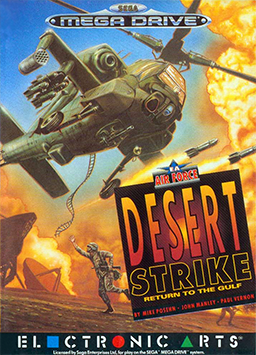
Desert Strike: Return to the Gulf is a shoot 'em up video game released by Electronic Arts (EA) in March 1992 for the Sega Genesis. The game was released on several other formats such as the Super Nintendo Entertainment System, including a much upgraded version for the Amiga home computer. The game was inspired by the Gulf War and depicts a conflict between an insane Middle Eastern dictator, General Kilbaba, and the United States. The player controls an Apache helicopter and attempts to destroy enemy weapons and installations, rescue hostages and capture enemy personnel, while managing supplies of fuel and ammunition.
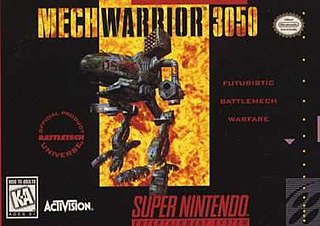
MechWarrior 3050, also known as BattleTech in its original Sega Genesis release and in Japan as BattleTech 3050 (バトルテック3050), is a 1994 mech-based video game developed by Malibu. The first BattleTech based game to be released for the Sega Genesis, it was later ported to the Super Nintendo by Activision as MechWarrior 3050. The Super Nintendo game was localized and published in Japan by Ask Group.
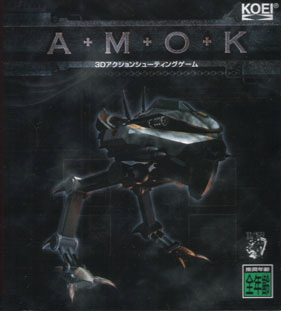
Amok is a 1996 mech-themed action video game for Windows and Sega Saturn. Players guide a robot called "Slambird" through nine different scenarios to complete several objectives. The game was noted for its use of voxel-based graphics for its environments rather than the polygonal models which were standard at the time of its release. Developed by Lemon, Amok began as a technology demo for the Sega 32X, but was reworked for the Saturn after Sega discontinued support for the 32X.
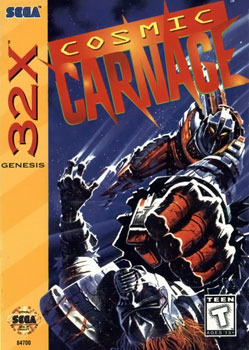
Cosmic Carnage is a 1994 fighting video game developed by Almanic Corporation, in conjunction with ALU, and published by Sega exclusively for the 32X add-on. Set in an uncharted star system, the game follows eight fighters from two factions in a struggle for survival. Its gameplay consists of one-on-one fights, with a main six-button configuration, featuring special moves and finisher techniques, as well as two playable modes. The title garnered mostly negative reception from critics since its release.

Kolibri is a shooting game created exclusively for the Sega 32X, a Sega Mega Drive/Genesis add-on console. It was designed by Ed Annunziata and developed by Novotrade. Kolibri is the word or root word for hummingbird in several European languages.
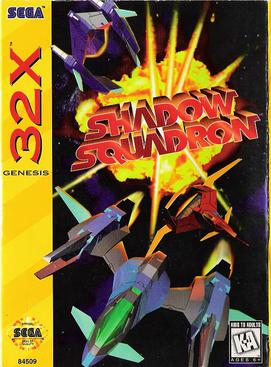
Shadow Squadron is a space combat simulation video game developed and published by Sega exclusively for the 32X add-on first in Japan on 26 April 1995, then in North America and Europe in June of the same year.

Supreme Warrior is a full-motion video (FMV) beat 'em up game developed by Digital Pictures. It was released for the 3DO Interactive Multiplayer and Sega CD in November 1994 in North America and in early 1995 in Europe, with subsequent releases in 1995 for the 32X, Macintosh, and Windows. The game is themed as a kung fu film where the player has to fight off opponents to protect half of a magical mask.

Darxide is a shoot 'em up for the 32X by Frontier Developments, released in January 1996 only in Europe. Designed by David Braben, it was one of the last releases for the console. Gameplay is similar to that of Asteroids in three dimensions. Players must destroy a number of space rocks in order to complete each level.
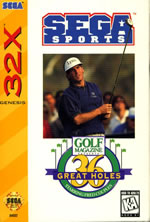
Golf Magazine Presents 36 Great Holes Starring Fred Couples is a golf video game for the 32X. The game features Fred Couples on the cover and is sponsored by Golf Magazine. It was released in 1995 in Japan, North America, and Europe. The game received mixed reviews.
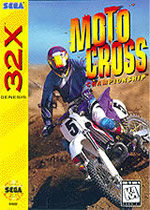
Motocross Championship is a racing video game developed by Artech Studios for the 32X. It was released in 1995. The premise of the game is based on motocross racing across twelve different tracks, while being able to attack opponents during the race. Motocross Championship received mixed reviews, with criticism on multiple aspects of the game. Some reviewers have suggested the game's quality impacts the 32X negatively.
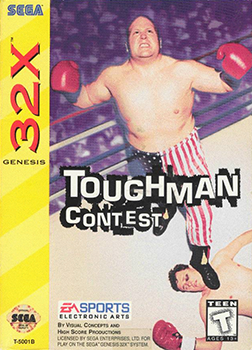
Toughman Contest is a boxing video game for the Sega Genesis and 32X. It is based on the Toughman Contest, and features Eric "Butterbean" Esch on the cover and as the game's final boss. The game was released in 1995. It received mixed reviews, generally criticizing the sluggishness of the gameplay while praising the selection of special moves.
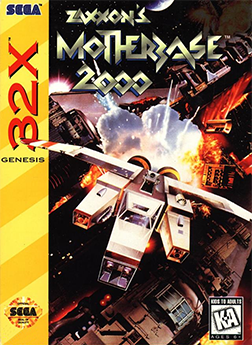
Zaxxon's Motherbase 2000, known in Europe as Motherbase and in Japan as Parasquad, is a 1995 isometric-scrolling shooter video game developed by CSK Research Institute and published by Sega for the 32X. The North American version was rebranded as part of the Zaxxon series due to its similar gameplay. Gameplay involves piloting a ship to destroy giant robots and enemy ships, while being able to capture enemy ships and use them as power-ups. Reception to Zaxxon's Motherbase 2000 was negative. While reception of the gameplay was mixed, the visuals were panned as being rough-edged, ugly, and susceptible to slowdown. Most North American critics also said the game is not similar enough to Zaxxon to justify the use of the series name.



















